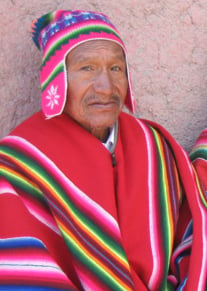Endangered Languages: Dying Faster
It may be difficult to imagine language as a living organism, but to linguists and language preservationists the 7,000 or so languages currently spoken make up a rapidly evolving ecosystem. And like the rainforests or the Great Coral Reef, the web of world languages is dangerously out of balance, with 417 languages in danger of becoming extinct. In a world where 50% of the population speaks one of the top twenty languages, there can be less incentive for the young to learn a language spoken only by the parents and grandparents of a small community. While there is a natural process for language death, it’s happening now at an alarming rate; it is estimated that up to 90% of today’s languages will be extinct by the end of the century.
 Under extraordinary conditions, even a healthy language can die in two generations. Indigenous languages especially are at risk, as for centuries invading cultures—the English and the Spanish in the case of the Americas—made it a point to wipe out native languages and instate their own as a way to lower resistance to colonization. In fact, of the 170 remaining indigenous languages in North and South America (half of what there were 400 years ago,) only Greenlandic Eskimo isn’t currently endangered.
Under extraordinary conditions, even a healthy language can die in two generations. Indigenous languages especially are at risk, as for centuries invading cultures—the English and the Spanish in the case of the Americas—made it a point to wipe out native languages and instate their own as a way to lower resistance to colonization. In fact, of the 170 remaining indigenous languages in North and South America (half of what there were 400 years ago,) only Greenlandic Eskimo isn’t currently endangered.
The political, cultural, and economic hegemony of majority languages makes it impractical for young people to invest in learning one that won’t help them find a job or communicate with a vast number of people. (When is the last time you saw the Inari Saami dialect of northern Finland offered in a university course list?)
So why does the fate of languages matter? Because each endangered language offers an insight into a soon-to-be lost way of life, a key to an entire culture’s way of thinking which, as speakers of majority languages, we could learn from. For example, Kawesqar, a native language from the Patagonian region of Chile that’s been hanging on since the Ice Age, rarely uses the future tense.
The speakers of Kawesqar are nomads who travel by canoe and do not view the world in terms of a future when they know it’s apt to change. On the other hand, they have many different past tenses which connote a rich history from the recent past to a distant, mythological past that exists. Without minority languages, we lose access to entire microcosms of literature, folklore, and philosophy—all crucial aspects of our collective humanity.

While reviving endangered languages is possible, it’s difficult to foresee the outcome. Of the endangered Gaelic languages, Irish has been sufficiently revived, though few speak it natively, while Manx from the Isle of Man is virtually extinct. On the other hand, 21% of the population of Wales now speaks Welsh natively.
Modern technology actually provides some of our greatest resources in counteracting language death, giving us the ability to record, translate, and archive endangered languages. Websites and podcasts can give students greater access to the language of their ancestors, as well as the opportunity to interact with a community on a wider scale. And really, the survival of all languages depends on the enthusiasm of their younger generations; as the age-old saying goes, “Children are the future.”
Do you have any experience with an endangered language?
